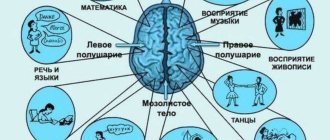The theory of six handshakes was formulated by American psychologist Stanley Milgram in 1969. The results of his research showed that two randomly selected people are separated by no more than five levels of mutual acquaintances and six levels of connections. This means that the “right person” who can help you solve your pressing business problem is somewhere nearby. Using examples from my own practice and the practice of my partners, I will tell you how to reach such a person and establish mutually beneficial cooperation to achieve specific results.
Putting the theory of six handshakes into practice will allow you to:
- attract large clients;
- find partners, sponsors and investors;
- find a suitable candidate for a vacancy;
- rent premises on special terms;
- attract speakers and guests to your business event;
- find a support group and much more.
The theory is universal, it allows you to achieve goals two to three times faster compared to traditional approaches and save money.
While attending more than 50 business events a year, while observing managers, I noticed that they make the following common mistakes in business communication:
- communicate and stay close only to those with whom they came;
- occupy an observer position and practically do not initiate communication;
- during lunch breaks or coffee breaks, they communicate with other participants extremely selectively and only with equal status;
- almost do not use the online tools provided by the event organizers;
- They pass the received business cards on to their employees without giving new acquaintances personal attention.
The same trends manifest themselves in everyday business life, for example, when managers do not communicate regularly with their circle of contacts or do not do so intensively enough.
The same networking tools, applied in practice, can bring diametrically opposite results. Networking is not isolated, but is built into the communication system and is based on trust and relationships. This is a communication skill, which means it is used in practice by people who have their own unique experience, level of professional training, character, etc. What works in practice for one may not work for another.
It is difficult to be responsible for the actions and decisions of another person, but also for your own. This means that you can only control the number of attempts and the quality of your own actions. The theory of six handshakes is not a panacea, but it complements (and sometimes replaces) other tools and methods of achieving goals.
Example 1
In the summer of 2021, the Fruzhe confectionery factory opened a vacancy for a divisional director with a location in one of the regions. Publications in print media and on search engine sites did not produce results. All candidates were eliminated at the stage of a personal interview with the HR director or commercial director. Three months later, the position remained open. Then the HR director published a series of posts on Facebook about finding an employee. The commercial director reposted, and as a result, expanded the reach of the audience thanks to his own network of contacts. The next day, a response to the vacancy came from a colleague of the commercial director from one of his previous jobs. The candidate was interviewed, and after four days the vacancy was filled.
Example 2
The management team decided to make a surprise for the anniversary of the shareholder, who was partial to contemporary art and handmade gifts. The budget was limited, but the managers wanted to present an exclusive gift. A solution was found: the commercial director remembered that at the university he studied in the same group with a student who was interested in painting: she painted portraits from photographs. The top manager found a former classmate on the VKontakte social network. The cost of the artist’s services turned out to be slightly higher than the market price, but as a result of long-standing personal contact, it was possible to reduce the price of the portrait by 2.5 times. The painting was ready within two weeks. The hero of the day was delighted with the gift.
Truth or Myth
Whether or not to believe the law of 6 handshakes, everyone decides for themselves. However, it is worth considering that in the scientific world they take it more than seriously. Moreover, scientists who speak out for this theory work in a variety of fields, often far from sociology, with which it all began. One of the most striking examples of this attitude of the scientific world is the game “Erdos Number”, named after the Hungarian mathematician who wrote many scientific works. The point of the game is to find the shortest human chain that leads from any randomly selected scientist to Erdős himself. For example, a scientist is assigned the first number if he worked with the founder of the game at any time. The second number is given to the scientist who worked with a scientist who, in turn, worked with Erdős himself. It is noteworthy that most Nobel Prize winners have small numbers in this game.
By the way, anyone can test this theory, and you don’t need to be a scientist to do this. All you need to do is create your own “dating map”. It is advisable that the link no lower than the fourth should be an acquaintance with a celebrity. The greater his popularity, the higher the likelihood of meeting a huge number of people, including high-ranking people, who, in turn, have no less acquaintances.
So maybe we all know each other after 6 handshakes. Due to a detailed study of all the results of experiments carried out at different periods of time and using different methods, the popular joke about meeting the Queen of England no longer seems fantastic. Think about which celebrity, who until now seemed completely unattainable, you might be familiar with, according to this theory. It is likely that the result of your own research will greatly surprise you.
Differences in traditions
National characteristics of handshakes are much more diverse than one might expect. Swedes have the strongest handshake, while Pakistani men have the weakest handshake. For most Europeans, a strong handshake is considered good manners, but in the Middle East and Turkey this is not accepted - well-mannered people only indicate the gesture by weakly squeezing the palm. In Africa, a friendly disposition is demonstrated by shaking hands with both hands, but it is unacceptable to squeeze the hand too tightly.
In some countries, the ritual varies depending on social status. In South Korea, the hand extended by your boss must be accepted in both palms, and you can only greet friends with one hand.
For Muslims, a handshake between a woman and a man is impossible, since Islam prohibits touching a member of the opposite sex if he is not your relative.
People in the UK rarely shake hands and almost never say goodbye. But the Germans and Swiss shake hands at every opportunity.
Saudi Arabian tradition: the host of the house first shakes the guest’s palm, then places his left hand on his shoulder and kisses him on both cheeks. In some Muslim countries, after shaking hands, it is customary to place the right hand to the heart. There are also customs that are completely strange to us. For example, the Maasai living in Africa spit on their hands before giving it, and in the Congo they blow on their hands. For the Japanese, an outstretched hand is a sign of aggression; in this country, people bow to each other when they meet.
Progress of the experiment
The sites where Milgram's experiment was conducted were the cities of Omaha and Wichita, which are located in the states of Nebraska and Kansas, respectively. The recipient was a resident of Boston. The scientists explained their choice by the fact that, despite the small distance of the cities from each other in terms of geography, their residents were separated by a whole gulf in terms of living standards and education.
The experiment consisted of randomly selected residents of Omaha and Wichita being sent letters inviting them to take part in a scientific experiment. If they agreed, they should write their details on the form included in the letter. This letter would then be sent to the Boston resident whose name was on the envelope. If the addressee knew him personally, he should have forwarded the letter to him, and if not, then he should have sent the message to a person who was more likely to know him. The only condition was that the envelope should be sent only to a personally acquainted person or relative.
Results of the experiment
The main difficulty of the study was the number of people who agreed to pass on the letter. Moreover, the failure occurred at various stages of the experiment. As a result, out of 296 letters sent with an invitation to participate, the final addressee received 64. At the same time, the length of the chain of friends averaged 5-6 people.
It is noteworthy that many people, when choosing the next addressee, proceeded from the one who lives closer to the addressee’s city, and it was precisely in this case that the letter did not reach its final destination. It took 2 years for the law of six handshakes to be formulated, which with the advent of the Internet received a new meaning.
Active position
So you decided to take part in a thematic conference. Don't think that you can just show up and attend the event; you need to prepare for it in advance. Familiarize yourself with the topic, note useful speeches, the right people you can meet there. Think about topics to talk to them about during your coffee break.
Write down in a notebook the expected questions that you can ask the speakers. This is a very powerful way to make professional connections by expressing your interest in what the other person is working on. But you also need to ask the question correctly: stand up, state your first and last name, the company you work for, then ask the question. When entering a discussion, avoid aggression and show respect for your interlocutor.
Such discussions are also useful to you because the authorities in your professional community will pay attention to you and will notice you. After all, you probably wouldn't have a chance to interact with these people in a different situation.
General rules for handshakes
Anyone can initiate handshakes when meeting or making acquaintances. However, if the other person is noticeably higher than you in status or much older in age, then he may not respond to your greeting gesture and an awkward situation may arise. In addition, you need to evaluate how appropriate a handshake would be here and now
Let’s say a person is very busy communicating at an important business meeting. Perhaps you shouldn’t approach him now and distract him or greet him later
Likewise, it is not always appropriate to shake hands with little-known people. For example, in a fitness club many people know each other by sight. But people usually shake hands only in small fitness clubs or only with those whom you more or less know. In large fitness clubs, when you come to a workout, it is not customary to shake hands with absolutely everyone. This is inconvenient and not entirely appropriate. Therefore, you should not reach out to everyone. After all, a handshake is a sign of special attention.
In general, the handshake should be strong and confident. This does not mean that you should squeeze your hand as hard as you can until it hurts. This can make you look awkward. A firm handshake should be confident, but should not cause pain to those with whom you greet. A sluggish or weak handshake may indicate a general low energy tone, weakness, or lack of interest. But there are also exceptions. for example, when a man shakes hands with a woman, he may deliberately take the girl's hand weakly so as not to appear unnecessarily rude. Also, people whose work involves manual labor may take care of their hands and therefore do not greet very strongly. There are also situations when a person has arthritis and it is painful for him to shake hands with effort.
When shaking hands, it is advisable to maintain an average distance. Don't get too close unless the person is a close friend or relative of yours. Each of us has the right to personal space. At the same time, you should not extend your hand too far from yourself. This can non-verbally demonstrate your dislike. At least that's how it can be regarded.
The rule of good manners is to greet with dry hands. But if you just came out of the restroom and your hands are wet, then if they extend their hand to you, you can extend your forearm and say that your hands are wet. I have seen this behavior in many situations. This way you show the person a sign of respect without getting their hands wet. The car mechanic can extend his left hand because... the right one is all covered in oil. Thus, he seems to be showing a sign of attention and respect, but will not dirty the hands of his friend. It is usually customary to greet with your right hand, even if you are left-handed.
If your hands often sweat, you can use, for example, dry wipes for shaking hands. When shaking hands, it is customary to establish visual contact and look into the eyes.
Psychologists believe that when you extend your hand with your palm down, you thereby show your arrogance and superiority, and on the contrary, when you extend your hand with your palm up, you acknowledge a lower position. The best idea is to greet with your palm to the side. This implies an equal position during greeting. It will be good form.
advertising is not displayed
It is also good practice to stand up while shaking hands if you are sitting. In this way, you express your respectful attitude towards another person - this will add plus one point to your karma in the eyes of the second person.
As a general rule, the handshake should not be too long and there should not be too much swaying back and forth.
In a men's team, it is customary to take off your gloves when saying hello, even in cold weather. In some cases, when cyclists wearing gloves greet each other, one may tell the other “don’t take it off” in order to save time. However, in general, the default is to remove the glove. At the same time, women are allowed not to take off their gloves. Again, you always need to look at the situation and evaluate what is appropriate and what is not. For example, a pool instructor is unlikely to be surprised by a wet handshake. But in a business environment, this can ruin your impression.
There are many types of handshakes. By the wrist, by the elbow, only by the fingers, a handshake like a grip in arm wrestling, as well as a handshake when the hand is clasped with both hands, a handshake with fists. But, as a rule, it is appropriate to greet with a classic hand grip, when the hands of two people form a kind of lock.
Experimental confirmation of the theory
An assumption not confirmed by practice would remain a hypothesis and an intellectual game, so experiments were carried out regularly. The first to confirm the correctness of the hypothesis about the acquaintance of all the inhabitants of the planet was psychologist Stanley Milgram. In 1967, an American conducted the “Small World” experiment.
In two US cities - Omaha and Wichita - 300 random participants were selected who were supposed to contact a stock broker in Boston by letter. The participants did not know the address, but had to figure it out through friends. The letter was sent along a chain, each recipient adding his name to it. After summing up, it turned out that on average the chain consisted of five people or six connections.
Subsequent experiments were carried out under other conditions and with different initial data, but the results always turned out to be similar and confirmed the correctness of the hypothesis.
In 1998, Duncan Watts and Steven Strogatz from Cornell University were able to create a mathematical model and replicate Milgram's experiment on a large scale. The study involved tens of thousands of people from all over the world. The recipients of the messages were citizens of different countries and continents, city dwellers and rural residents belonging to different social groups. Letters were now sent via the Internet, but even in this case the result was already known - the chain consisted mainly of six links. In addition, with the help of a mathematical model, it was possible to clarify interesting patterns in the organization of human communities. It turned out, for example, that in global communications people who simultaneously belong to several groups are especially useful.
The most extensive study was conducted by Microsoft experts Jure Leskovec and Eric Horwitz, conducted in 2006. Researchers analyzed more than 30 billion messages via MSN Messenger, sent by 240 million users over 30 days. The study took about two years. Leskovets and Horwitz, of course, did not read the text messages, but they saw information about people: gender, age, location, frequency and volume of communications, contacts. The results of the labor-intensive study of information are of scientific interest, but we are interested in a specific topic - there were 6.6 connections between two MSN users. That is, a number close to what we already know.
The Internet has greatly facilitated communication - social networks have services that allow you to trace a chain of mutual friends, games based on the “Small World” principle, and network projects for exploring the prospects of global information networks.
"Erdős number"
Thanks to the Hungarian mathematician Pal Erdős, the theory was successfully confirmed by practice. The mathematician wrote 1,525 scientific papers during his life together with other authors. Mathematical calculations showed that the chain of authors who ever collaborated with Erdős consisted of five people. This is where the concept of the “Erdős number” arose, with the help of which the shortest chain of co-authorship on joint scientific articles from a certain scientist to Pál Erdős himself is determined.
It's a small world
Despite the fact that this theory looks fantastic at first glance, it has existed for quite a long time and has been confirmed more than once.
It is difficult to say when the expression “It’s a small world” appeared. Most likely, it dates back to the times when people lived only on their own territory and practically did not travel beyond its borders.
Over the years, the borders expanded, people began to first visit each other, and then move from their homes in search of a better life. However, in new places we met either fellow countrymen or other people with whom we had once known. As a last resort, in conversations with new people there were almost always mutual acquaintances. It is since then that this concept has entered our lexicon.
Sign language. Handshake
In one of the previous articles, we already looked at the types of handshake. Depending on the position of the palms, it can denote superiority, submission and equality. To refresh your memories, let's give an example.
You meet someone for the first time, and you greet each other with a regular handshake. Depending on the position of your recipient's palm, it may mean the following:
- Palm facing down - “This guy is trying to put pressure on me, I should be careful.”
- Palm facing up - “Perhaps I can put pressure on this person, it’s worth taking this fact into account.”
- Palms parallel to each other - “I definitely like this guy. We'll get along."
Types of handshakes
This information is transmitted unconsciously; after a series of training, you can train yourself to use one or another handshake to have the desired effect on others.
It is worth noting that there are exceptions to the rules. For example, people suffering from arthritis are forced to respond with a weak handshake. A limp handshake is also typical for a number of professions, for example, surgeons and musicians.
To accurately determine what kind of person is in front of you, observe his subsequent actions. A compliant person, in the future, will demonstrate other gestures that characterize him as a submissive recipient, and a domineering person will show his aggressiveness. If two powerful people greet each other, a symbolic struggle occurs between them, during which each tries to subjugate the opponent’s hand. Often this struggle results in an equal handshake in which both hands remain vertical and both people develop a sense of mutual respect. This is exactly the kind of handshake that a father teaches his son when he asks him to greet him “like a man.”
If you are greeting a powerful person, it is very difficult to persuade him to shake hands equally, and even more difficult to do it in the least noticeable way. Previously, we have already considered one of the ways to return the initiative to our own hands, but now the time has come to introduce another method of disarming such people. It will allow you not only to take control of the situation, but also to confuse the recipient with an invasion of your personal zone.
To learn this technique, you need to train the following movements:
- First movement . When you take the power person's hand, step forward with your left foot. I recommend that you always lean forward to shake hands with your left leg, even if you do not use the technique described. This will give you room to maneuver and allow you to neutralize a dominant handshake if something happens.
- Second movement . Move your right foot forward and stand in front of the recipient on the left, moving into his personal area.
- Movement three . Place your left foot behind your right and shake your partner's hand.
Behavior when shaking hands
This technique allows you to bring your opponent’s palm to a different position, as well as become the master of the situation, since you have violated your partner’s intimate area.
Result
The main obstacle to obtaining accurate information from this experiment was that many of those who received letters at various stages of its implementation did not agree to pass them on. In total, scientists sent 296 envelopes asking for participation, of which only 64 reached the Bostonian. Moreover, the average length of each chain that reached the goal was 5.5-6 people. Another interesting fact was established: some participants chose the “intermediate” link in this chain, guided by which of their friends lived closest to Boston. Moreover, it was precisely in such cases that the letters did not reach their goal.
Based on the data obtained, two years later the theory of 6 handshakes was formulated, which with the development of the Internet received a new meaning.
Milgram experiment
The rule about the close ties of humanity is associated with the names of American psychologists Stanley Milgram and Jeffrey Travers, who in 1969 proposed a concept that has come down to us as the theory of 6 handshakes. Even 2 years before the results of the experiment were published, Milgram conducted a study whose purpose was to determine the length of the chain connecting people with each other. Calling it “It’s a Small World,” the scientist developed a special algorithm designed to count the number of connections between two people.
For against the idea of 6 handshakes
Are there any limitations to this seemingly infallible theory? Of course, since several centuries ago humanity was not so monolithic and did not have such opportunities for movement.
In fact, the rule of 6 handshakes does not automatically mean that each of us can be familiar with the Queen of England or the Sultan of Brunei. People tend to form communities based on some limited characteristics, for example, by age, by thematic interests, and so on. The boundaries of each circle of acquaintances are revealed after 2-3 levels.
The idea, which is similar to the hypothesis of 6 handshakes, is revealed by the kind and touching film “Christmas Trees”. It takes place in various Russian cities, each of which is in its own time zone. People pass along a chain of requests from a child, whom the president can personally help, but no one knows him personally.
This is an interesting rule, friends, that we came across today, and the progress that accompanies us only confirms it. People are becoming more and more communicative thanks to social networks, online conferences and other methods and mechanisms of communication. Subscribe to blog updates, and we will continue to discuss useful and exciting events. Bye!
Today, the Internet has erased all borders, and every day millions of people from different countries and continents get to know each other, although they would hardly ever see each other in real life. However, few know that today it would be more likely to be called the theory of six clicks, was described in a science fiction story by Frides Karinthy long before the beginning of the computer era.
History of the handshake
Few people know, but shaking hands is a rather ancient gesture. We will not delve into history, but, for example, this ritual is attested to in a bas-relief depicting the Babylonian king Marduk-zakir-shumi I shaking hands with the Assyrian king Shalmananaser III. This episode occurred in 855 BC. An impressive figure, isn't it? There is also a version, probably the most romantic and beautiful, that this gesture found its popularity during the Middle Ages at knightly tournaments. Despite the large number of hypotheses, the meaning of a handshake has always remained the same - to show the absence of a weapon in the right hand and, as a result, to demonstrate good intentions. Agree, it is more pleasant to shake hands with your boss or acquaintance, imagining yourself as a noble knight, than to do it without any reflection.
The knights' handshake is a gesture of respect at knightly tournaments
Speaking about the history of handshakes in Russia, it is worth noting that it had the sacred meaning of transmitting biorhythm, since when the wrists touch, the pulse also connects. It was customary to shake hands only with friends, while when greeting other people, it was enough to raise your hat. This is where the expression “casual acquaintance” comes from.
Any place will do
You should not trust fate in such acquaintances; you should use every opportunity and strive to expand your social circle. It’s not for nothing that networking is an entire art about how to make business friends on purpose. Some have this talent from birth, others have to learn throughout their lives. So where do you meet people?
First of all, at work. The simplest talkative plumber has a greater number of connections. He visits many people during the day and can always do something beyond what the owner of the apartment has already paid for. So he already follows the first rule of networking described above. All he had to do was leave behind a pleasant impression and his business card. In just a couple of years, he can easily open his own business.
If your possibilities are not so limitless, and you spend most of your time in the office, then there are non-trivial options here too. Be sure to attend all thematic events, conferences, forums, exhibitions, even corporate parties. Advanced training courses and seminars are also suitable.
Handshake rules
This seemingly formality is important, because our first impression of a person often depends on the gesture. A handshake eloquently speaks of interest or, conversely, complete indifference, expressing weakness or confidence, demonstrating sincerity or an intention to hide something. With this informative gesture, we send a subtle but powerful impulse about our intentions.
If you want to make a favorable impression and create the right mood from the first seconds of communication, master the rules of handshakes.
Assess the situation before you extend your hand in greeting. There are no hard and fast rules, but there are some restrictions. For example, if a person is significantly older and higher in status than you, it is appropriate to wait for the first move on his part. The same applies to communicating with unfamiliar people. Keep in mind that a handshake is a special sign that should not be used in all cases without exception.
Shake hands with people who are significant to you, those you respect, and those you pay special attention to. A limp handshake is evidence of lack of will, lack of interest or uncertainty. An energetic handshake should not be too strong
Your task is not to demonstrate strength, but to indicate a friendly disposition. Choose a distance that is not too large, so that your interlocutor does not get the impression that you are pushing him away, but not too short, as if you want to pull the person close to you. Such cordiality would be appropriate when meeting friends. Your palm should not be wet. Everyone is familiar with the sensation of touching a hand that is not completely dry and cool. When going to an important meeting, wash your hands thoroughly and do not squeeze them. If you know about your problem and are not sure that you can keep your palms dry, it is better to use deodorant or put a dry napkin in your pocket to discreetly wipe your hands. When shaking hands, make eye contact to avoid coming across as dishonest or insincere. Never extend your hand palm down - this is a superior gesture that will not please anyone. A hand turned palm up indicates your willingness to submit. The optimal number of hand shakes in a handshake is three, but never extend the greeting to more than seven. If someone extends their hand to you to greet you while you are sitting, stand up - this will show respect for the person. When greeting each other with a handshake, men should take off their gloves, regardless of the weather. According to the rules of etiquette, women may not take off their gloves outdoors, but indoors they expose their hands. Politicians often use the "Glove" handshake, in which one of the interlocutors covers the other's palm with both hands. This demonstrates openness and purity of intentions. However, when meeting people, you should not use the “Glove”, since this technique causes the opposite effect - people are wary and reluctant to make contact. The right hand is intended for a handshake; this rule works even for left-handers. But if your right hand, for example, is dirty, you can extend your left hand too, explaining the reason for this behavior. When a woman and a man meet, according to the rules of etiquette, the woman extends her hand first, if desired. When people of different ages meet, the elder decides whether there will be a handshake. When introduced, the one who was introduced is the first to give his hand. If someone extends their hand to you, good manners dictate that you return the greeting. Ignoring a hand hanging in the air is considered an insult. When you approach a group of people, one of whom you know, shake hands with everyone present. To avoid confusion between hands when two couples meet, use the following rule: traditionally, women stand to the right of men, and they shake each other's hands first, then the men, after which the men can shake hands.
Remember that it is completely unacceptable to greet everyone with a handshake. This greeting can be compared to calling “you” to close people and “you” to everyone else.
Social media experiment
With the advent of the era of social networks, the experiment was repeated there. Probably, each of us has noticed that when accepting a friend invitation from a stranger, we see one or two mutual friends. Surprisingly, these people connected you for a long time in real or virtual life, and in fact you knew each other long before you started communicating on social networks. Facebook, being the largest social network today, popular all over the world, conducted its research in collaboration with the University of Milan. And their verdict: the number of links in the human chain is only 4.4. Of course, there is an error, since the registration coverage on Facebook is not 100%.
What can you tell when shaking hands?
Scientists at the University of Alabama claim that the strength of your handshake can be used to predict your personality type. Introverts shake hands hesitantly and weakly, but extroverts behave much more energetically, leaving a positive impression of themselves. By this gesture you can determine the mood of the interlocutor. So, a person who puts his hand in such a way that it is on top intends to control the situation. If the interlocutor extends his hand with his palm up, he is ready to obey. Palms meeting vertically indicate an attitude towards equal relationships.
One proper handshake is as effective as three hours of negotiations. Scientists, trying to measure and classify everything in the world, have built a formula for the perfect handshake. We will not bore you with unnecessary philosophizing - it is unlikely that you will use this knowledge in life. In general, the secret of success is simple: look into the eyes of your interlocutor, smile sincerely, shake hands firmly, without holding your counterpart’s palm for more than three seconds.
Scientists from Canada have proven that the nature of a person’s handshake can be used to judge a person’s health and biological age. We don’t know if you can use the information of Canadian experts, but the strength of a full-strength person’s handshake is 300 newtons, and each decrease in this indicator by 50 newtons increases the risk of death by 16%. The manner of shaking hands is inherited: 65% of this gesture is determined by genetics, 35% depends on upbringing and well-being. Psychologists are inclined to think that a vigorous handshake indicates good heredity.
Count It's a small world
It is interesting that a seemingly purely sociological study marked the beginning of the development of a whole direction in graph theory. In particular, a new concept was introduced - the graph “It’s a small world”, which has the following properties: two of its arbitrary vertices are most likely not adjacent, but one of them is reachable from the other through a small number of transitions through other vertices. In other words, a “it’s a small world” graph is a network in which the typical distance between any two vertices, or the number of steps required to reach one from the other, increases in proportion to the natural logarithm of the number of vertices in the network. Moreover, it has been proven that social networks, wiki sites, Internet connectivity, gene networks, etc. are quite well described by the graph “It’s a small world.”
A few notes to consider
Sometimes an enemy may use a handshake to convince you that he is a friend, but this is a rare case. Yes, some people are good actors, but this particular gesture will usually be unpleasant if there was no real emotion involved, which is why it is usually considered a positive sign.
In addition to this, this gesture is usually common among men as it is not common for a man to shake hands with a woman with both hands as it may seem awkward.
Also, this gesture usually does not occur between close friends (article about friendship between a man and a woman), since these friends express their emotional attachment differently. Since the stranger has fewer channels to convey his positive emotions, he uses a handshake to send these emotions.
And, of course, like any other body language signal, it all happens on an unconscious level.
How to test a hypothesis on social networks
This theory is not as easy to understand as it might seem at first glance. But social networks, for example, VKontakte, will help to demonstrate it clearly. In any case, the following algorithm helped me personally:
- In the search for people, we select any person you don’t know (to do this, enter the first and last name that comes to mind)
- From the dropped list of candidates, you can, without hesitation, choose the one who lives in another city, or even better, in another country
- We go to his page, to his list of friends and select the first one on the list
- Now we visit the page of this first one on the list and look at his friends, and again select the very first one
- We repeat this operation up to 5-6 times. But personally, I already discovered my friends on the 3rd person
Thus, the rule shows that I knew a girl who lives thousands of kilometers away from me and about whom I had never heard anything, through an indirect chain of acquaintances.
What is the essence of the theory and its discovery
Each of us knows the saying “how small the world is,” which says that in the most remote places you can meet your former colleague, classmate or just an acquaintance. But, at first glance, this is an ordinary coincidence, and nothing more. But there is an evidence base that suggests that we know any person living on our planet through a chain of no more than 5 acquaintances.
This theory first gained fame at the beginning of the 20th century, after the publication of the story “Links of the Chain,” written by the Hungarian writer F. Karinthy. In it, he demonstrated in a playful way that each of us can know absolutely any other person, regardless of whether he is a famous person or an ordinary individual.
In subsequent years, many scientists and amateurs repeatedly conducted experiments to confirm or refute this rule. For example, residents of American cities were given the task of using this system to find a person from another city whose postal address was unknown to the participants. Each of them wrote a letter, which was then passed on to some acquaintance, and so on.
The chain was monitored, because all participants added their contact information. All the experiments that were carried out at that time and much later proved that the hypothesis turned out to be absolutely correct.
Milgram's experiment
It turns out that “it’s a small world” is not only a common phrase, but also the name of a curious psychological experiment that excited the public in the 60s. Then the American psychologist Stanley Milgram conceived an experiment to test the recently developed hypothesis about the connectivity of social networks.
Milgram prepared 160 letters and sent them to random recipients in Omaha, Nebraska. Each letter contained the name of a stockbroker from Sharon, Massachusetts, who worked in Boston, and an unusual request: write your name on the envelope and send it to someone who might be closer to the addressee geographically or professionally: a sister in Boston, a colleague in Massachusetts, or a friend whose father works at the stock exchange - anyone who, in the recipient’s opinion, could deliver the letter through a minimum number of forwardings.
As the envelope passed from person to person, a list of names accumulated on it, the number of which Milgram analyzed. As it turns out, the average is five to six. The experimenter himself was very surprised by the result, because, according to the estimates of everyone he interviewed, the letters must have passed a hundred or more hands.
Next is analytics. By examining the routes taken by the envelopes, Milgram realized that more than half of them passed through the hands of three people—Jacobs, a clothing salesman from a store near the broker's house, and two of the addressee's colleagues. That is, several dozen independent chains were closed on just three people. Isn't this the answer?
A little history
To completely simplify this scheme, I will explain it with an example. Remember the series "Breaking Bad"? There is an interesting point about the fact that the lawyer knows a guy who knows another guy who is needed. While the theory had not yet been formed, it was first written about by the Hungarian Karinthy Frides around 1929. In his story “Links of the Chain,” he jokingly shared the idea that all people on the planet are connected to each other, regardless of whether they are famous or from an ordinary simple family.
Research by psychologists
In 1969, psychologist Stanley Milgram and his colleague Jeffrey Traveros decided to explore this hypothesis and conduct an experiment. To do this, they needed a complete stranger, whom they decided to discover with the help of people who could know his “casual” acquaintances and friends. By chance, the choice fell on a broker from Massachusetts, who worked in Boston.
Stanley and Jeffrey, according to some sources, prepared 160 letters, and according to others - 300, and sent them to various residents of the United States. In these letters there was a request that they, having written their contact information, forward the envelope to some person who may be close to the specified broker either professionally or geographically, for example, also living in Boston or knowing his relatives in Massachusetts.
It is only important that this person to whom they planned to send it was either a relative or a friend, but not a random stranger. And while the envelopes made their journey, they gradually acquired new names. Those who knew about the experiment were of the opinion that a lot of time would have to be spent on the process, and that the letters would pass through at least 100 hands before reaching the designated person. In the end, 60 letters reached the addressee.
And after Milgram analyzed the entire list of names that were indicated by the people participating in the experiment, he realized that the envelopes managed to visit mainly 5-6 people, after which they ended up with the broker. That is, the theory of six handshakes was indeed confirmed. Afterwards, Stanley noticed that the names of three people were listed on more than 30 envelopes. One of them was a clothing salesman from the store next to which the broker lived, the other two were his colleagues.
That is, they had the widest circle of acquaintances, thanks to which the study ended successfully. Later, Malcolm Glaudell, a journalist from Canada, coined the term “unifier”, which characterizes such individuals who know how to create connections.
Microsoft Research
In 2006, Microsoft became interested in this theory and decided to conduct its own research. Thanks to modern technology, it has become possible to calculate the average mathematically. Corporation employees processed billions of messages in literally one month and came to the conclusion that two completely different and unfamiliar people are actually separated by 6 so-called handshakes. To be more precise, the average value was 6.6.
Facebook-based research
But the experiments did not end there; using the well-known social network Facebook as a basis, in 2011 scientists from the University of Milan received a slightly different figure - only 4.74. And indeed, every year the circle of acquaintances of every person on the planet increases, because it has become popular to add as friends even those people whom you have crossed paths with somewhere before, and even then, you haven’t really had time to get to know each other.
And the fact that in a rare house there is no telephone or computer with Internet access allows anyone to communicate even with someone who is currently on the other side of the globe. There is even a service that helps establish connections between users, and developments are underway to organize large-scale communication between the entire population of the planet.
In principle, the process has already begun if we count and analyze the number of sites for dating, learning and just communication, where it is possible to correspond not only with fellow countrymen, but also with representatives of other countries.
And sociologists from the University of Columbia organized a whole quest. Having recruited approximately a thousand volunteers, they provided only superficial information, such as the full name, place of residence and occupation of 20 people, and asked them to find them on the condition that they use only e-mail. Believe it or not, literally with the help of 4 messages the first “secret” person was discovered.
The theory of 6 handshakes is presented very interestingly in the film “Yolki”. It is light, cheerful and touching, and tells the story of how residents from different parts of Russia help one child from an orphanage. Do you know how? They convey his request to each other, which is addressed to the President. And this is not so easy to do, if only because no one knows him personally.
Testing the theory of six handshakes 20
- 15.12.15 02:15
• InspiredByData • #273191 • Habrahabr
• From the sandbox
•
•
31000
Python, Data Mining, VKontakte API
I would like to tell you about my experiment to test the “Theory of Six Handshakes”. I was inspired to write this material by the article “Analyzing VK friendships using Python” (to avoid repetition, I will refer to it in the future). Since in general the task was posed differently by me, and the methods used were also different, I decided that this might be interesting. Problem formulation: visualize all connections between two users within one social network. In this case, connections should not be duplicated, for example, if Vanya knows Petya through Olya, then Olya does not participate in further iterations of finding mutual friends. To practice using the API, I chose VKontakte. Based on the limitations of the API and the functionality of the methods, it was decided that the optimal number of “handshakes” in terms of the time to receive information would be 3. So we will still check the “Theory of Three Handshakes” for now. Thus, with an average number of friends of 200, we get a sample of 8 million people. For example, on a Ukrainian scale I almost always found connections.?? Structurally, the task can be divided into the following stages:
- Find mutual friends between original user 1 (user_1) and original user 2 (user_2).
- Search for mutual friends between user_2 and user_1's friends.
- Search for mutual friends between friends user_2 and friends user_1.
- Obtaining detailed information about found connections.
- Visualization.
Requests “Library for simplifying HTTP requests” TimeThreading “Learning to write multi-threaded and multi-process applications in Python” original article on the VKontakte API page
- To access an API method, a POST or GET request is used.
- List of methods I used: users.get, friends.get, friends.getMutual, execute.
- The execute method allows you to run up to 25 methods in one request.
- No more than 3 requests can be made per second (using one token).
- The limit for the target_uids parameter of the friends.getMutual method is 300. I will go into more detail about this below.
executeSTLEONfriends.getMutual
Stage 1. Finding mutual friends between user_1 and user_2
- method is the name of the method we are accessing via the API.
- parameters — parameters of this method (can be found in the description of each method).
- token is a string that authorizes you on the server. I repeat that obtaining a token is described in detail here and here.
friends.get
friends.getMutual
friends.getMutual
try-except
Stage 3. Search for mutual friends between friends user_2 and friends user_1
executefriends.getfriends.getMutualexecute“Learning to write multi-threaded and multi-process applications in Python”
Stage 5. Visualization
networkxD3.js“Radial Reingold–Tilford Tree”
CherryPyrepositories GitHubD3.js“Radial Reingold–Tilford Tree”D3.jsD3 Dependencies
You can help and transfer some funds for the development of the site
From handshakes to kisses
In a number of countries in Southern, Central and Eastern Europe, Latin America and the Middle East, a social kiss is appropriate as a greeting. When giving a hello or goodbye kiss, be friendly and as open as possible. If you don't feel it, then it's better to extend your hand to indicate your intention for a handshake. Don't kiss people you don't know or your co-workers (unless you're on friendly terms) - save kissing for friends, family or dates.
The wife of the American president, Melania Trump, committed a gross violation of etiquette during a meeting with the royal family in the UK. During the greeting, the First Lady kissed Camilla, Duchess of Cornwall, on the cheek. However, this is unacceptable - only members of the royal family could express emotions among themselves.
Melania Trump violated etiquette
In business, social kissing should be reserved for very close or long-standing clients and colleagues. It is customary to kiss with the right cheek: short, light contact, no sound effects, air kisses or pursed lips.
Like shaking hands, a social kiss as a form of greeting is inappropriate in new environments. Today, initiating a hug or kiss when meeting will be a sign of bad taste.
Short chains
Malcolm Glaudell, a Canadian journalist and author of books on popular psychology and sociology, calls such people “connectors” and argues that most social connections are made possible through them - people with a very wide circle of acquaintances. Roughly speaking, not every person “A” is connected with every other person “B” through six techniques, but there are several connectors with a huge number of contacts who, through a small number of handshakes, are connected with each other and with “ordinary” people like the notorious “A” and "B". By the way, in our age of the Internet, when many have the habit of maintaining acquaintances with casually familiar people through social networks, these chains of handshakes can be even shorter.
Let's return to our assumptions at the beginning of the article. Is meeting the French president a joke? Not really. Another joke about introducing any of us to the Queen of England in five steps arose from Microsoft's analysis of data from more than 240 million users. The number of “handshakes” identified in their study between any “A” and any “B” is 6.6. Another experiment, Facebook, determined this figure to be 4.74.
Australian farmer? Again, no joke. In 2012, Columbia Magazine published an article about a study by Colombian scientists who invited volunteers to find a person anywhere in the world by his name, place of residence and profession using email. During this experiment, an Australian resident “found” the addressee from Siberia after just four messages.
Well, okay, with a peasant from Nicaragua it might not work out so easily. At the end of the day, the number of handshakes, whether four, five, or six and a half, is the average number. Nevertheless, the very possibility of such (any!) acquaintance in our “small” world, you see, is exciting.
Other types of handshakes
- "Glove" – used mainly by politicians. The initiator of such a handshake tries to emphasize his honesty, but you should not use this gesture in everyday life, as it can have the exact opposite effect. (picture of a glove).
Glove - "Dead Fish" . Some handshakes can be so emotionless and "lifeless" that they give the impression of touching a dead fish. Naturally, touching a fish corpse does not evoke any positive emotions, so people with this type of handshake are perceived as spineless and unpleasant. It’s funny that such people don’t realize that this type of handshake is typical for them, so it’s worth asking your friends about this topic.
- Handshake with bone crunching . Characteristic of aggressive and tough people.
- Straight hand shake . Like the previous option, it is a sign of a person’s aggressiveness. The main purpose of such a handshake is an attempt to maintain distance and not allow a person into your intimate area.
- Squeezing fingertips . Instead of a hand, by mistake, only fingers are included in a handshake. Even if the initiator of such a handshake is friendly towards you, it symbolizes his lack of self-confidence and desire to keep his distance.
- Handshake with hand drawn towards you . Can mean one of two things. Either a person is extremely insecure and feels comfortable only within his own personal zone, or he belongs to a nation that is characterized by a narrower intimate zone.
- Shaking with both hands at once. Expresses trust and sincerity. To convey the overflow of feelings, the left hand is used, placed on the partner’s right hand. The higher the place on the shoulder where the initiator places his left hand, the greater the feelings he experiences. The reverse side of the coin is a violation of the personal zone. This handshake is possible only between fairly close people, or between people who simultaneously experience an emotional uplift during the handshake. If this feeling is not mutual, then there is a possibility of mistrust.
Shaking with both hands at once
Confirmation of the rule of 6 handshakes with modern technologies
Further - more: with the development of technology, scientists were able to calculate this algorithm mathematically. One of the large-scale studies was carried out on a grand scale in 2006 by Microsoft employees. They processed billions of messages sent by users over the course of a month. It turned out that the average distance between 2 users was 6.6.
As soon as the Internet became a widespread phenomenon, the principle of accessibility of any user became even more obvious and easily provable, thanks to VK, FaceBook, LiveJournal and other resources that unite people from various remote corners of the globe.
Today there are even services that help establish a chain from one user to another. The possibilities of global communication are being explored in a variety of networking projects and applications.
Handshake rules
The woman decides whether to offer a hand to shake or not, but if we are talking about the relationship between two ladies, then the eldest one, who is in a higher position and also joins the group of speakers, greets first. If, according to the rules, the one who did not want to do so should be the first to give a hand, then there is no need to insist.
Apart from hand serving primacy, there are some situations to consider.
- You can accept an extended hand while sitting. You will have to stand up if a woman who is older or higher in position offers her hand.
- Always give only your right hand. You can give a left hand and apologize in advance if the main one is injured for some reason or there is no way to free her.
- When you meet an acquaintance among strangers and decide to greet him with a handshake, you need to greet all the other people in this company in the same way.
- The correct order for greeting two couples is as follows: the ladies shake hands, then greet the men, ending with a man's handshake.
- It is worth extending your hand at the very end, since it is not customary to walk or stand with an outstretched hand, and it looks somewhat ridiculous.
- Shaking hands across the table is not very correct.
- During the reception, you must shake hands with all guests without exception. As a guest, you will also have to shake hands with everyone, regardless of personal relationships.
How to shake hands correctly: advice
You need to extend your hand two or three steps before you approach the person - to indicate that you are ready to shake hands. It is better to have straight fingers (but not tense or clenched) on the approach - this will give you and your partner the opportunity to fully clasp the hand. Squeeze your hand only after your hands are connected. If you squeeze your hand before your hands are properly connected, you will clench your fingers, which will make them feel like they are about to be broken. After your hands are connected, shake two or three times and you can release.
Handshake duration
As for the duration of the handshake, there is a direct correlation with the time that the interlocutor is willing to spend communicating with you. The longer he shakes your hand, the longer the interaction he expects. The shorter the handshake, the faster your opponent is ready to end the dialogue with you. Often a brief handshake indicates the desire of your interlocutor to quickly move on to solving the issue for which you met. Brevity will indicate a reluctance to waste time on formal procedures.
Handshake refusal
Refusal to shake hands is a clear admission of antipathy and disdain. When someone refuses to shake an outstretched hand, this is a signal that an agreement cannot be reached.
Interesting observation
In our culture, shaking hands with girls is not common, and usually I am the initiator, while refusal to shake my hand is a very rare occurrence, but it still occurs under the auspices of “I don’t shake girls’ hands,” “it’s not customary for girls to shake hands.” It would seem “Russian culture”, and there is no negative connotation in this, however, even in this case, such behavior indicates antipathy, only in this case it is presented as implicit.
For example, I once had to interact for a long time within the framework of a business with a developer (claiming equity participation), who showed similar behavior even at the stage of acquaintance. It would have been wiser to refuse to cooperate with him altogether, but at that time, for some reason, I did not attach importance to non-verbal manifestations, and besides, the developer liked other participants in the project. Later, in the process of working with him, it was very difficult for me to come to an agreement; at every opportunity, the “partner” tried in every possible way to oust me from projects, creating conflicts over petty issues.
However, this character’s handshake with other partners was weak or too short (gestures of disdain), and later he had conflicts and misunderstandings with them, which allows me to assume that this kind of disregard for others is an individual personality trait.
Handshake strength
The harder they shake your hand, the more emotional energy the interlocutor is ready to pour into communication. At the same time, a limp handshake, as I already said, is not always a sign of hostility or disdain (maybe the person is just not feeling well). And a strong handshake, accordingly, is not always a sign of a good-natured disposition, as you already understood. The force of compression indicates the willingness to expend a certain amount of muscle energy during communication with you. But what the nature of the use of this energy will be depends on other factors.











